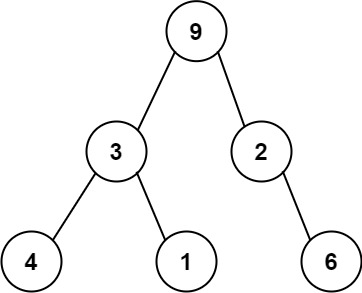2021-08-26 Daily-Challenge
Today I have done Design Circular Queue and leetcode's August LeetCoding Challenge with cpp.
Design Circular Queue
Description
Design your implementation of the circular queue. The circular queue is a linear data structure in which the operations are performed based on FIFO (First In First Out) principle and the last position is connected back to the first position to make a circle. It is also called "Ring Buffer".
One of the benefits of the circular queue is that we can make use of the spaces in front of the queue. In a normal queue, once the queue becomes full, we cannot insert the next element even if there is a space in front of the queue. But using the circular queue, we can use the space to store new values.
Implementation the MyCircularQueue class:
MyCircularQueue(k)Initializes the object with the size of the queue to bek.int Front()Gets the front item from the queue. If the queue is empty, return-1.int Rear()Gets the last item from the queue. If the queue is empty, return-1.boolean enQueue(int value)Inserts an element into the circular queue. Returntrueif the operation is successful.boolean deQueue()Deletes an element from the circular queue. Returntrueif the operation is successful.boolean isEmpty()Checks whether the circular queue is empty or not.boolean isFull()Checks whether the circular queue is full or not.
You must solve the problem without using the built-in queue data structure in your programming language.
Example 1:
Input
["MyCircularQueue", "enQueue", "enQueue", "enQueue", "enQueue", "Rear", "isFull", "deQueue", "enQueue", "Rear"]
[[3], [1], [2], [3], [4], [], [], [], [4], []]
Output
[null, true, true, true, false, 3, true, true, true, 4]
Explanation
MyCircularQueue myCircularQueue = new MyCircularQueue(3);
myCircularQueue.enQueue(1); // return True
myCircularQueue.enQueue(2); // return True
myCircularQueue.enQueue(3); // return True
myCircularQueue.enQueue(4); // return False
myCircularQueue.Rear(); // return 3
myCircularQueue.isFull(); // return True
myCircularQueue.deQueue(); // return True
myCircularQueue.enQueue(4); // return True
myCircularQueue.Rear(); // return 4
Constraints:
1 <= k <= 10000 <= value <= 1000- At most
3000calls will be made toenQueue,deQueue,Front,Rear,isEmpty, andisFull.
Solution
class MyCircularQueue {
vector<int> container;
int begin;
int size;
int capacity;
public:
MyCircularQueue(int k): capacity(k) {
container.resize(k);
begin = 0;
size = 0;
}
bool enQueue(int value) {
if(size == capacity) return false;
container[(begin + size) % capacity] = value;
size += 1;
return true;
}
bool deQueue() {
if(!size) return false;
begin = (begin + 1) % capacity;
size -= 1;
return true;
}
int Front() {
if(!size) return -1;
return container[begin];
}
int Rear() {
if(!size) return -1;
return container[(begin + size - 1) % capacity];
}
bool isEmpty() {
return size == 0;
}
bool isFull() {
return size == capacity;
}
};
// Accepted
// 58/58 cases passed (16 ms)
// Your runtime beats 97.99 % of cpp submissions
// Your memory usage beats 40.24 % of cpp submissions (16.9 MB)
August LeetCoding Challenge 26
Description
Verify Preorder Serialization of a Binary Tree
One way to serialize a binary tree is to use preorder traversal. When we encounter a non-null node, we record the node's value. If it is a null node, we record using a sentinel value such as '#'.

For example, the above binary tree can be serialized to the string "9,3,4,#,#,1,#,#,2,#,6,#,#", where '#' represents a null node.
Given a string of comma-separated values preorder, return true if it is a correct preorder traversal serialization of a binary tree.
It is guaranteed that each comma-separated value in the string must be either an integer or a character '#' representing null pointer.
You may assume that the input format is always valid.
- For example, it could never contain two consecutive commas, such as
"1,,3".
Note: You are not allowed to reconstruct the tree.
Example 1:
Input: preorder = "9,3,4,#,#,1,#,#,2,#,6,#,#"
Output: true
Example 2:
Input: preorder = "1,#"
Output: false
Example 3:
Input: preorder = "9,#,#,1"
Output: false
Constraints:
1 <= preorder.length <= 10^4preoderconsist of integers in the range[0, 100]and'#'separated by commas','.
Solution
auto speedup = [](){
cin.tie(nullptr);
cout.tie(nullptr);
ios::sync_with_stdio(false);
return 0;
}();
class Solution {
public:
bool isValidSerialization(string preorder) {
int count = 1;
int len = preorder.length();
for (int i = 0; i < len; ++i) {
if(preorder[i] == '#') {
count -= 1;
i += 1;
if(count == 0 && i != len) return false;
} else {
while(i < len && preorder[i] != ',') {
i += 1;
}
count += 1;
}
}
return !count;
}
};
// Accepted
// 151/151 cases passed (0 ms)
// Your runtime beats 100 % of cpp submissions
// Your memory usage beats 66.91 % of cpp submissions (6.8 MB)